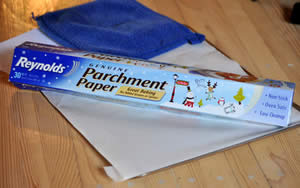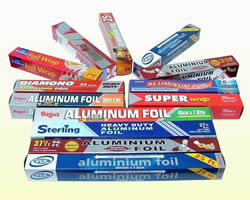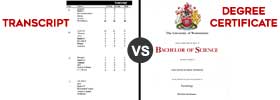Difference between Parchment Paper and Aluminum Foil
Key Difference: Parchment paper, also known as baking paper, is a cellulose-based paper that is used mainly in baking as a substitute for greasing. Aluminum foil is a thin sheet of aluminum that is less than 0.2 millimeters in thickness and can be used for various different things around the house.
Parchment paper and aluminum foils are two different types of packaging and cooking materials that are used around the house. Parchment paper actually resembles paper and is used for mainly baking. It is used as an alternative to greasing, making it easier to just peel the baked goods off the sheet when done, making the process less messy. Aluminum foil is a thin sheet of aluminum that is used for packaging, cooking and storage. Aluminum can also be used to cook meat, fish and other items in the oven, but cannot be used in the microwave oven. Both of these are used for different purposes and should not be used interchangeably.
 Parchment paper, also known as baking paper, is a cellulose-based paper that is used mainly in baking as a substitute for greasing. The baking paper performs the same job as greasing a pan in order to keep the food from sticking to it directly. This is a less messy form of it and can be discarded after use. Baking paper can resist high amounts of heat and can be used as a replacement for wax paper, as wax paper melts when exposed to high amounts of heat. Baking paper can also be used to wrap and store foods. In addition to these, the paper can also be used to prepare foods that require steaming such as en papillote.
Parchment paper, also known as baking paper, is a cellulose-based paper that is used mainly in baking as a substitute for greasing. The baking paper performs the same job as greasing a pan in order to keep the food from sticking to it directly. This is a less messy form of it and can be discarded after use. Baking paper can resist high amounts of heat and can be used as a replacement for wax paper, as wax paper melts when exposed to high amounts of heat. Baking paper can also be used to wrap and store foods. In addition to these, the paper can also be used to prepare foods that require steaming such as en papillote.
Parchment paper is created by running sheets of paper pulp through a bath of sulfuric acid. This process partially dissolves or gelatinizes the paper, after which the paper is dried. The treatment with sulfuric oxide forms a sulfurized cross-linked material with high density, stability, and heat resistance, and low surface energy, making the paper non-sticky. The paper also passes through a few rotating drums, which further strengthens the paper. Finally the paper is coated with silicone to make it sustain high temperatures.
 Aluminum foil is a thin sheet of aluminum that is less than 0.2 millimeters in thickness and can be used for various different things around the house. Aluminum sheets vary in thickness depending on what the foil is supposed to be used for. The most common foil that are available for commercial use are 0.016 millimeters thick, while heavy duty household foil is typically 0.024 millimeters. Aluminum is mostly used for packaging foods and other materials. Aluminum at home is used to keep the air from the fridge to contaminate the smell of the food, while others are used to packing the item. Aluminum foils are easy to tear and are often used with other materials such as plastic or paper wraps to ensure more sturdiness.
Aluminum foil is a thin sheet of aluminum that is less than 0.2 millimeters in thickness and can be used for various different things around the house. Aluminum sheets vary in thickness depending on what the foil is supposed to be used for. The most common foil that are available for commercial use are 0.016 millimeters thick, while heavy duty household foil is typically 0.024 millimeters. Aluminum is mostly used for packaging foods and other materials. Aluminum at home is used to keep the air from the fridge to contaminate the smell of the food, while others are used to packing the item. Aluminum foils are easy to tear and are often used with other materials such as plastic or paper wraps to ensure more sturdiness.
In addition to packaging, aluminum is also used for thermal insulation, cables and electronics because of its ability to conduct electricity. Aluminum foil is made by rolling aluminum sheet ingots casts, which are then re-rolled multiple times until the desired thickness is achieved. The sheets are applied heat but are cold-rolled to ensure it does not tear apart. The press machine has a sensor attached passes beta radiation through the foil to check the thickness of the foil and accordingly changes the process to either make the sheet thicker or thinner. The sheet is also lubricated to ensure that it does not become marked with a herringbone pattern. The lubricants usually burned-off during the heating and rolling process. When the thickness of the sheet is less than 0.025 mm, two layers are usually put together for the final pass and are later separated. The two sheets when separated results in one side of the foil sheet being shiny, while the other being matte. Aluminum sheets are used for storage, packaging, cooking and for many other household purposes, making it a pretty useful sheet to have around the house.
Image Courtesy: bakingbites.com, saffroninternational.co.in









Comments
Augustine Barack
Sun, 12/25/2016 - 13:47
Add new comment